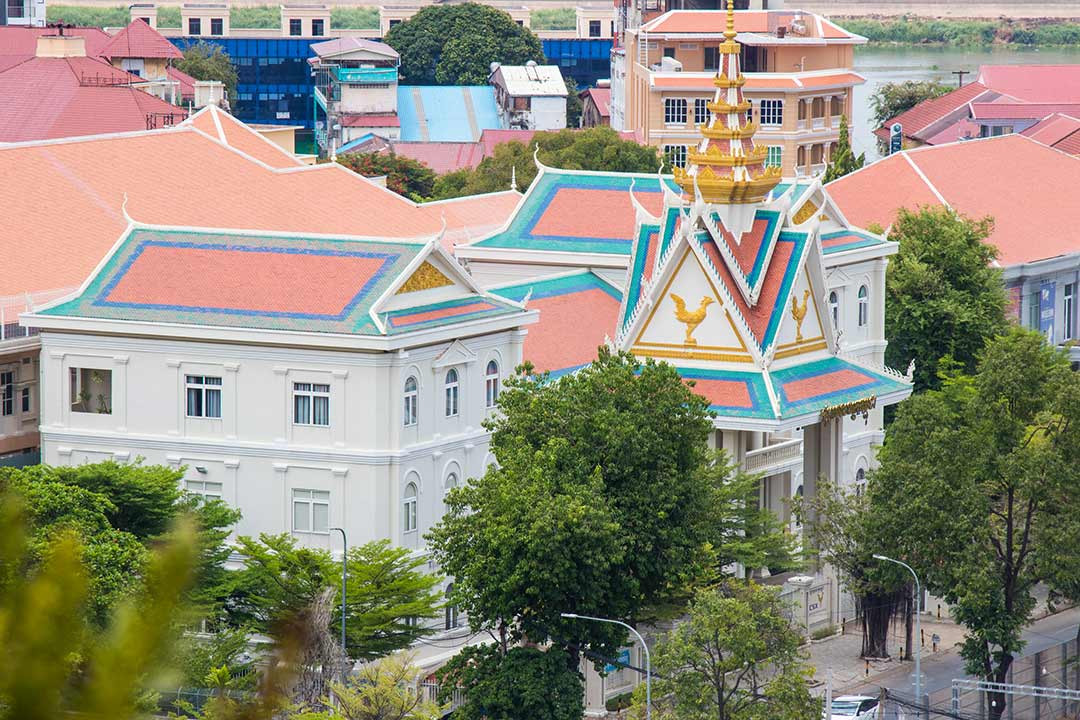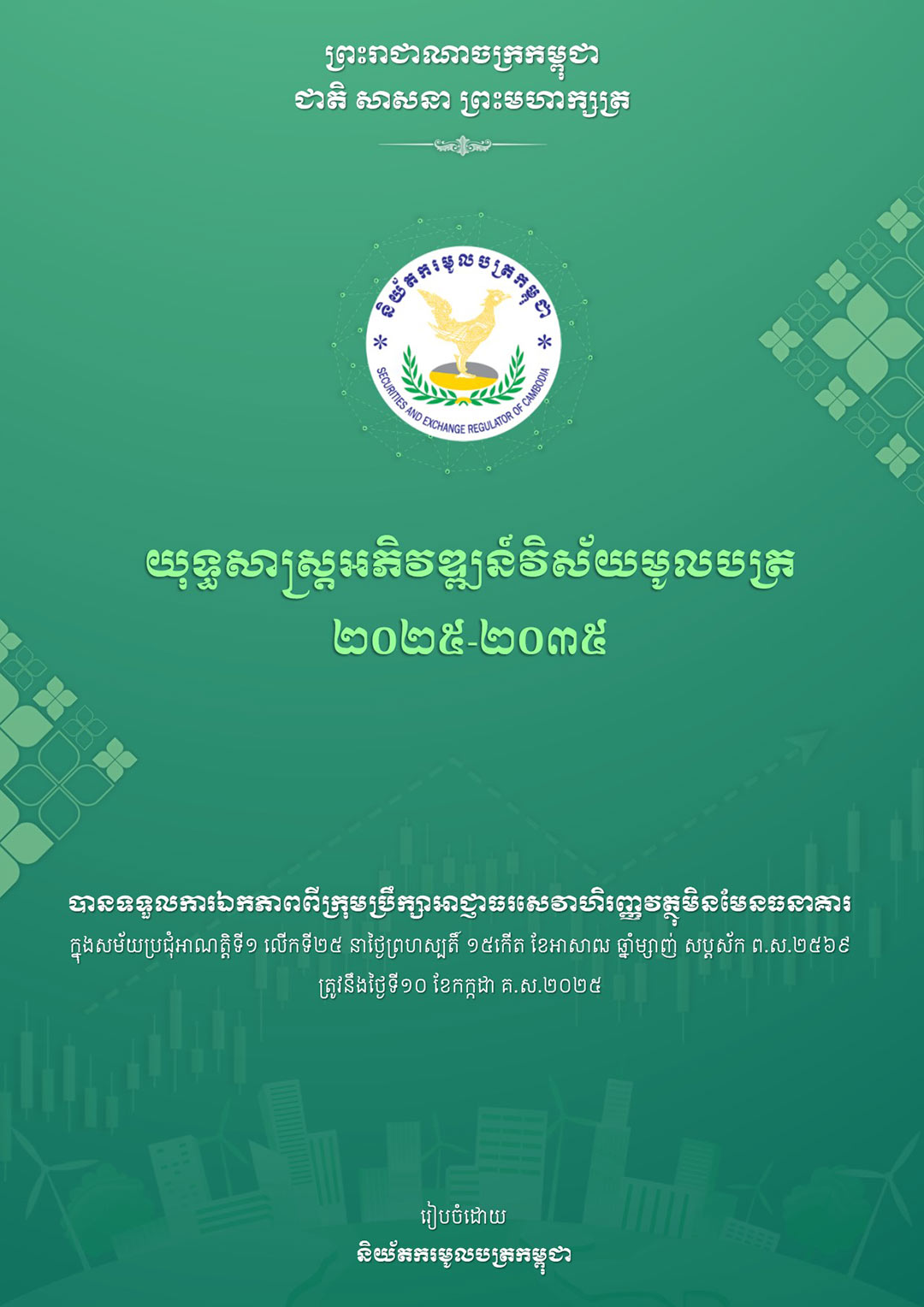Cambodia Unveils 10-Year Plan to Expand Securities Market, Attract Investment

The Securities and Exchange Regulator of Cambodia (SERC) has launched a 10-year master plan (2025-2035) aimed at expanding the country’s capital market, attracting more investors, and aligning with international standards in sustainable finance and digital innovation.
The Securities Development Master Plan 2025–2035 aims to transform Cambodia's capital market into a dynamic, diversified, and professionally managed engine of national economic development. Unveiled on July 16, the ten-year roadmap outlines a vision to expand listings, diversify investment products, and modernise regulatory and operational frameworks.
The SERC has stated that the plan aligns with Cambodia’s broader economic development agenda, including ‘Vision 2050’ and the Sustainable Development Goals (SDGs), and responds to the global push for sustainable finance, financial technology, and regional cooperation.
Building a Modern Market
The plan’s core vision is to establish a capital market that is “orderly, transparent, vibrant, resilient, sustainable, and innovative”. The SERC seeks to grow the number of listed companies; introduce new instruments, such as derivatives, commodities, and carbon credits; and develop a more robust bond and collective investment scheme (CIS) market.
Key priorities include:
- Encouraging more state-owned enterprises (SOEs) to list;
- Developing a secondary market for government bonds;
- Establishing a futures and commodities exchange;
- Expanding the range of derivatives and CIS products;
- Introducing a carbon credit trading platform;
- Enhancing market infrastructure, investor protection, and digital systems.
A Decade of Market Growth (2014–2024)
Cambodia’s capital market has grown steadily over the past decade. Equity market capitalisation rose from USD 157.8 million in 2014 to USD 2.77 billion in 2024, according to the SERC’s master plan. Trade volume also increased from 10 million shares to 219 million shares in the same period.
The bond market raised more than USD 258 million, and the number of registered investors grew from 6,191 to over 57,500. Derivatives trading, introduced in 2017, now accounts for a total trading value of USD 2.28 billion—no less than USD 300 million a year—and more than 11,600 trading accounts.
Despite this growth, officials noted that Cambodia’s capital market remains underdeveloped compared to its regional peers. Just 23 companies are listed on the Cambodia Securities Exchange, with most trading activity concentrated in a few sectors.

Developing Cambodia’s Capital Market: Strengths, Weaknesses, and Risks
A SWOT (strengths, weaknesses, opportunities, and threats) analysis included in the plan cited several advantages for further market development, including political stability, high mobile and internet penetration, a young and tech-savvy population, and a regulatory framework aligned with global standards.
However, the report also highlighted persistent challenges: low GDP per capita, limited financial literacy in rural areas, a lack of experienced professionals, and currency mismatches due to the dominance of the US dollar in the economy.
The plan outlines key opportunities to grow the market, including:
- Leveraging financial technology and data analytics for market expansion;
- Tapping into sustainable finance trends with green bonds and ESG investments;
- Integrating into regional markets through the ASEAN Capital Markets Forum (ACMF), the Asian Bond Markets Initiative (ABMI), and other platforms;
- Financing large-scale infrastructure projects outlined in Cambodia’s Logistics Master Plan 2023–2033.
Among the threats, the report cites limited product offerings, a narrow investor base, an inactive bond market, and rising cybersecurity risks. The SERC also warned that fraud and misinformation on digital platforms could erode investor confidence.
Securities Market Development Frameworks
Chapter 3 of the plan sets out three core strategic frameworks:
- Securities Market Strengthening – focused on diversifying products and services, expanding the investor base, upgrading infrastructure, and ensuring market integrity.
- Securities Market Expansion – developing sustainable finance and FinTech frameworks, modernising regulations, and building supervisory technology (RegTech and SupTech).
- Supporting Market Development – investing in public awareness campaigns, talent development, improved data systems, cross-sector cooperation, and international engagement.
The SERC plans to adopt a risk-based supervisory approach to cope with increasing market complexity, while also encouraging innovations in information dissemination and product delivery through mobile platforms.
Regional Integration and Global Alignment
Cambodia is playing a more prominent role in regional capital market integration. As Chair of the ASEAN Capital Markets Forum (ACMF) in 2022, Cambodia contributed to the development of the ASEAN Sustainability Bond Standards and the Sustainable and Responsible Fund Standard.
The SERC is currently working towards full membership in the International Organisation of Securities Commissions (IOSCO), and joined the Sustainable Banking and Finance Network (SBFN) in 2024 to further its ESG commitments.
Looking ahead, the Securities Development Master Plan 2025–2035 represents a significant step towards Cambodia’s transition into a frontier and, eventually, emerging market economy. It provides a clear, actionable blueprint for deepening capital markets, fostering investor confidence, and mobilising long-term funding for sustainable growth.
If the implementation of this bold vision matches the ambition behind it, Cambodia’s capital market is positioned to play a pivotal role in the country’s rapid economic development.